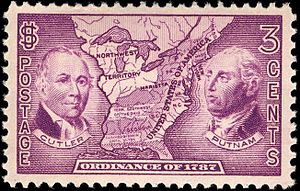
America’s dwindling historic memory barely flickers to recall a vengeance-seeking battalion of British soldiers torched the U.S. Capitol and might have laid waste to the entire town, had not the city’s prayers for rain delivered their salvation in 1814, during the war after the American Revolution.
A splinter group of British soldiers remembered well how a motley crew of American sympathizers set fire to the Canadian Parliament in York the year before. Ever patient, the British waited until after they’d concluded their European dust-up with the French. Now they planned to extract their vengeance as they roared down Pennsylvania Avenue to the “President’s Mansion,” then home to James and Dolly Madison.
Earlier President Madison galloped off to Bladensburg, Maryland, to assist troops there as they were defeated by a well-trained British contingent. Far enough away he could not return in time, Adams had to rely on the Dolly Madison, who was much more courageous than the hostess we’ve had reinforced in history class. He swiftly sent a courier to warn that their home had fallen under the hardened gaze of British arsonists as they moved into Washington. He urged her to leave, of course, but not to miss collecting a few of the mansion’s priceless pieces before her departure.
One of which was the Gilbert Stuart painting of Washington. Screws attached the painting to the walls in the Red Room, so she instructed a slave to get on a ladder to take it down, and hand it to the First Lady. Swiftly she carved it out of its frame and rolled it to take with her in the carriage.
Mrs. Madison sent word to the Octagon, a sturdy brick structure several blocks north of the President’s residence, where she took meager belongings and fled out the front door just as the British soldiers were coming in the back. Interior rooms, drapes, furniture and the makings of a meal went up in flames.
Not satisfied yet and giddy with the chaos and destruction they’d created, the British went on to torch the Treasury and the War Departments on either side of the residence. Only the Patent Office, with all those glorious paper documents, was spared because the federal patent officer debated, then pleaded and bargained with the fire-happy soldiers.

The British marauders could have determined they’d destroyed enough of the physical government to forestall the Colonists from rebuilding. They yet hoped they could convince the Colonists to give up this crazy idea of being independent of the Crown by upsetting their “experiment” in its infancy.
Large portions of the U.S. Senate with its wooden floors and cache of paper documents were destroyed as explosions rocked the seat of American law making– fires were ignited by massive amounts of British gunpowder. Torrents of water from above and flames that flashed across the structure attacking the U.S. House chambers as well. Madison’s residence, the Treasury and War Departments—everything but the Patent Office—were belching smoke, pierced by multi-story flames rushing out the windows and licking roofs throughout town. Explosions rattled buildings and shattered nerves throughout the city as the flames reached gunpowder traps set around still-standing buildings.
Washington residents prayed for the blessing of rain to extinguish the roaring fires. Within a few hours the heavens delivered—first more rain than had fallen in a decade, but before the rains stopped, the winds began, reaching hurricane force, overwhelming the smoldering flames and foreign troops bent on the town’s destruction.

Initially Washington’s inhabitants moaned in despair and wondered what they had done to deserve God’s wrath in casting such a plague upon them. Then, as the storm grew well beyond their modest request or humble expectations, massive waves of torrential rain quenched the rising flames and left a little of each building behind. Rather than deterring the Colonists from reconstructing their government in Washington, the British attack inspired them– just as future strikes would galvanize Americans two centuries hence. A plan to return to Philadelphia didn’t receive the votes needed for the move to a less prominent, possibly more defendable location. Washingtonians made a go of it in DC for spite, ignoring the heat, humidity and mosquitos that made it a hardship city for foreign diplomats at least until air conditioners hummed throughout the city, making it slightly more bearable inside.
Two key federal buildings—the rennovated National Capitol (completed 200 years ago in 1819) redesigned by B. Henry Latrobe, Jefferson’s surveyor of public buildings; and the refurbished President’s House (1817) using the original architect, James Hoban, to restored it over the next two years. Both were built and expanded with forethought and care to meet the needs of an expanding nation, which both continue to serve today.
The structures, while limestone, glass, brick and marble, serve an enduring testimony to the courage and endurance of the American people who have worked together, raised their families, fought and died in many wars since and those who toiled and parented in their absence.
Let us all remember the dark day in 1814 when the fires threatened to extinguish a young democracy, but when the hurricane and the rains came. Now 200 years later we have a special obligation to celebrate the lives lost on September 11, those who swiftly responded to unearth them from the Trade Center and the Pentagon, and those who gave their lives in a distant Pennsylvania field to prevent further destruction. We should not forget their parents, siblings and children who still radiate the pain of this physical and emotional loss. May we learn from them to value the people around us and learn from them.
We need to rekindle the sense of unity — of being part of something bigger than our individual needs and desires — to repair the self-inflicted wounds of isolation that hold us apart, preventing our nation’s reunion.
Historical Notes: Why is it called the “White House?” The walls to the mansion that remained after the fire were gray from the smoke, so they were painted white to remove the stains, a practice repeated over the years to yield an unworldly white tone for a structure smack dab in the middle of what would become a teaming city–the streets were still a mucky mess when the Lincoln’s moved in forty years later.
At the time of the fire, people referred to it as the President’s House or the Executive Mansion, thinking of George Washington, who laid the cornerstone in 1791, but John Adams became the first President to live there.
Site for Executive Mansion: George, who died at Mount Vernon in 1799, picked the location for the future “White House,” centrally located at the time, not sitting on top of a natural spring, so water had to be carried in. Not until Andrew Jackson did the White House have running water. Even then the water flowed from a source near Franklin Square just a mile away and impacted by the 18th and R Street dump for “night soil.” (Use your imagination.)
Capitol Site: Earlier Washington selected a parcel of land on the edge of the District by what is now George Washington University. Maybe he initially thought direct travel by boat from his home on the Potomac might be an advantage, but fortunately was deterred. That location on a much lower elevation sat in a misquito-infested marsh, years later improved by an infusion of soil that extended the city by many blocks. The original site would not support even a one-story limestone structure, much less the massive Capitol building planned for the site. There’s a reason the current site is called “Capitol Hill” because of its location overlooking the city and the Potomac River to the west.
.











